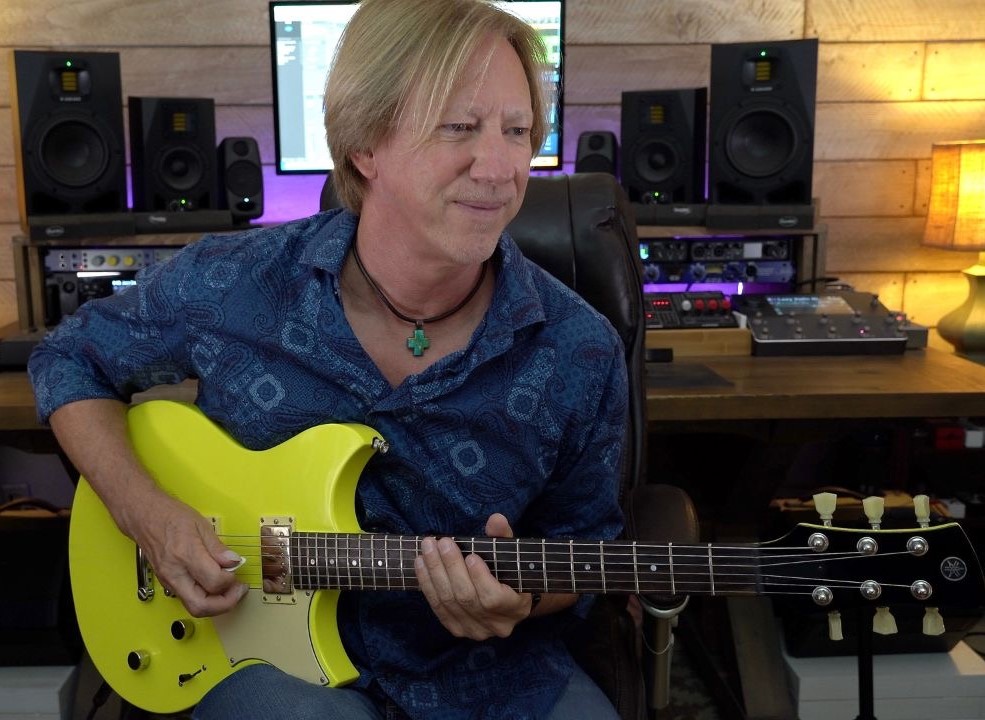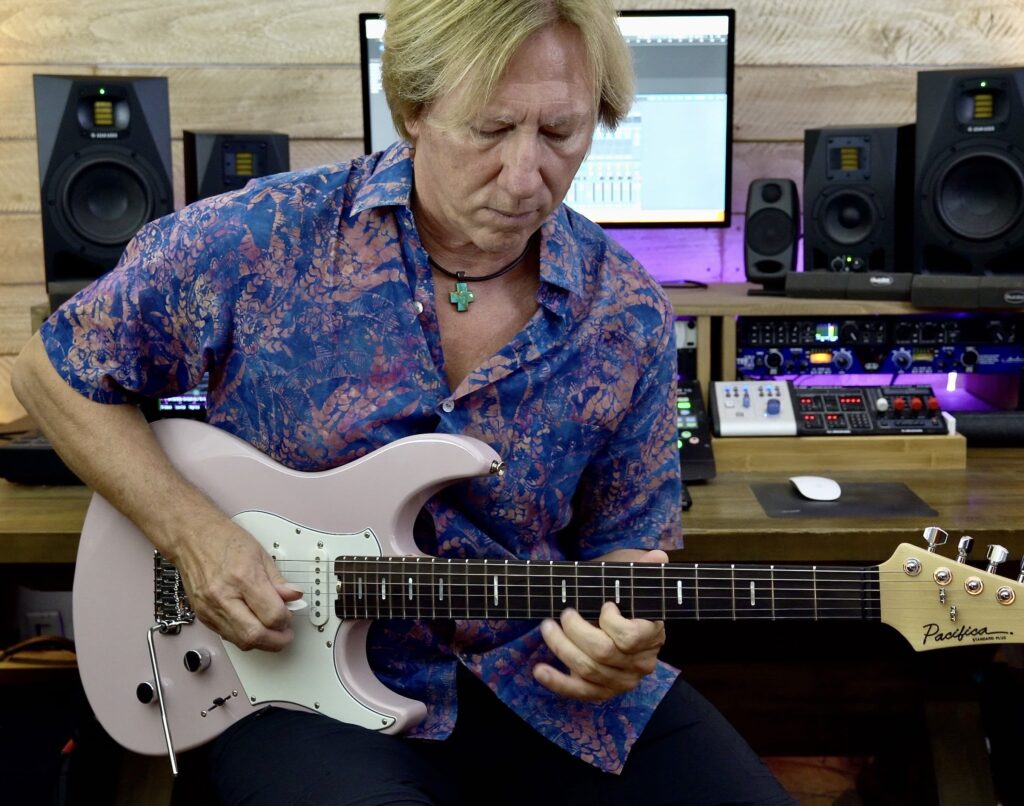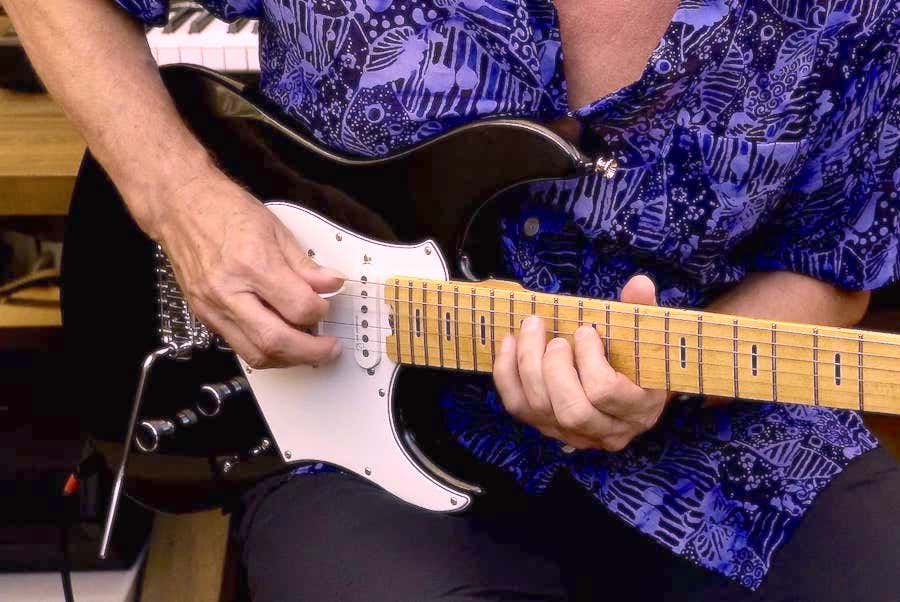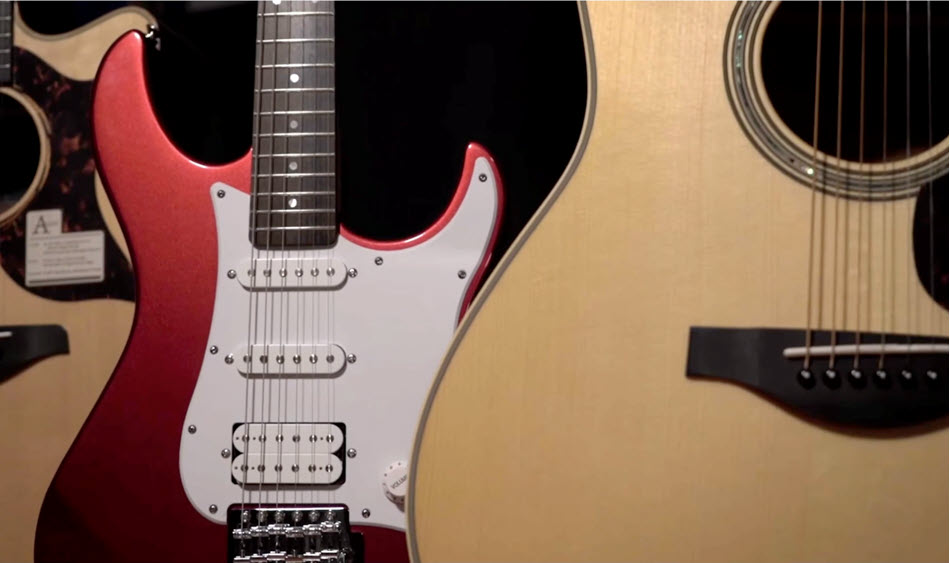Hitting the Sweet Notes
When it comes to live performance, a little preparation goes a long way.
I often represent Yamaha Guitars at the NAMM show — something I love doing. Preparation for events like this starts weeks in advance. It involves prerecording tracks, rehearsing solos, selecting songs and dialing in my gear for optimum sound.
This year, the night before the show, I was asked to perform on a nylon-string guitar at an industry reception. I chose the Yamaha SLG200N SILENT Guitar™ for this performance because it’s small and extremely travel-friendly when flying to gigs. I took some time to create a nice nylon-string tone in my Line 6 Helix® and started to rehearse a setlist of pieces for the gig. I decided on approximately 20 tunes, all popular instrumentals like “Change The World” and “New Kid In Town,” adding looped endings so that I could improvise melodies over the chorus sections.
I was also scheduled to perform for Yamaha on a shared stage early every morning. Knowing there would be little time for setup and teardown between artists, I decided to keep my rig simple. I decided to use a Yamaha Red Label FSX5, along with a couple of effects pedals, and I also took my own microphone — one that I know works well with my vocal tone. (It’s always good to have a mic on hand that you know complements your voice.)
All of this was in addition to my daily performances in the Yamaha Guitars pavilion, on three different stages. For these 30-minute time slots, I prepared backing tracks that would allow me to stylistically represent the Revstar series of electric guitars and their different pickup configurations: humbuckers, FilterTrons and P90s.
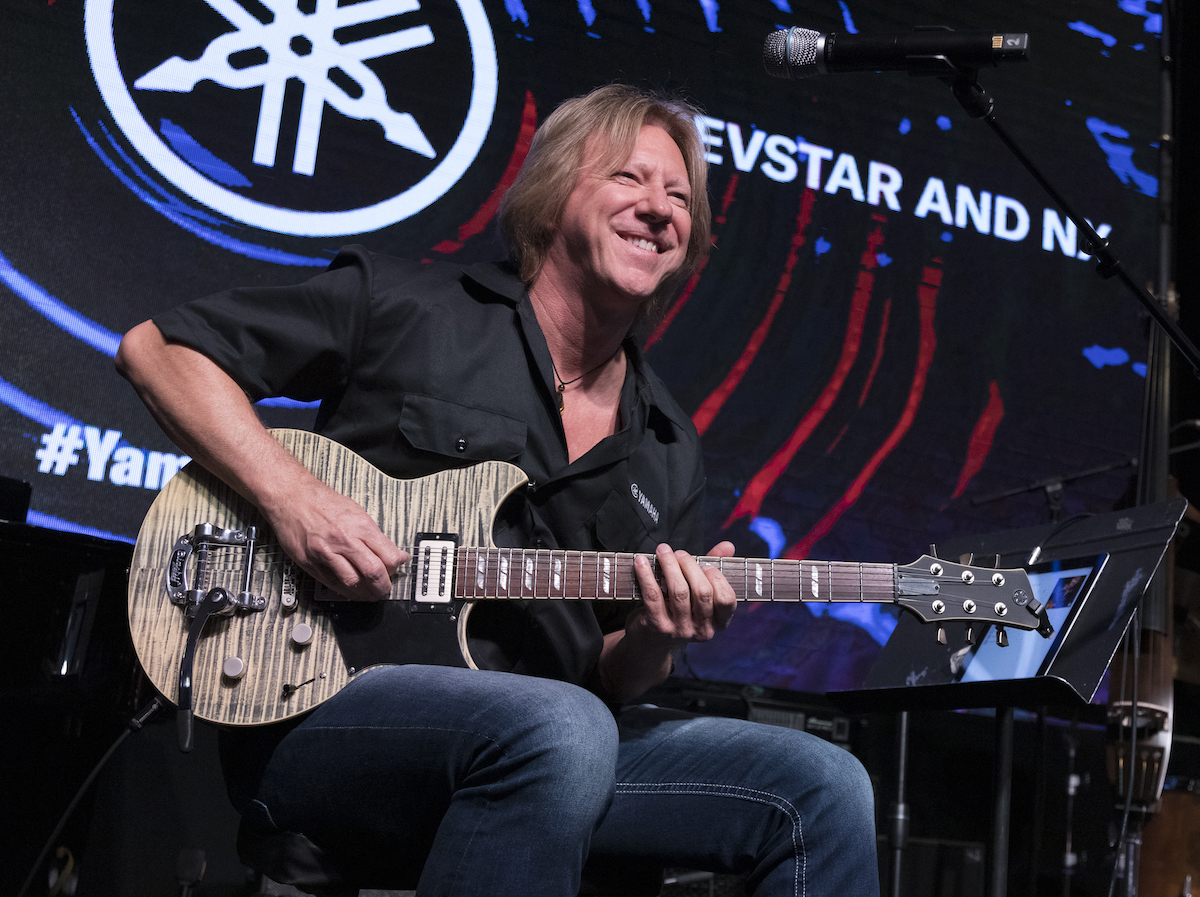
The Guitar
I also wanted to demonstrate the amazing SA2200 semi-hollow body electric-acoustic guitar. This beautiful instrument is handcrafted in Japan and is, in my opinion, one of the finest guitars Yamaha makes. I decided to record a B minor blues backing track specifically for that instrument and the smoky tonality I knew it was capable of. As expected, the guitar paired perfectly with the track I’d prepared.
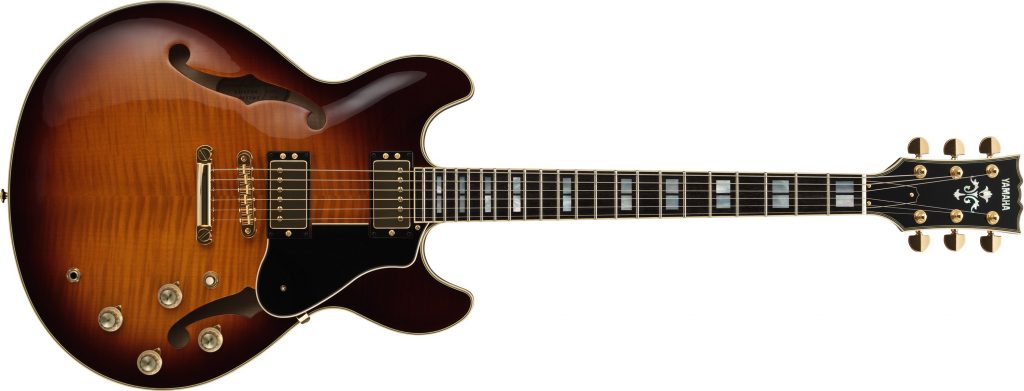
The Videos
A good friend of mine, Larry Seyer, happened to capture one of those performances, with me playing an SA2200 into a Line 6 Helix and a Line 6 Powercab® 212 Plus amplifier. Here’s the video:
Ready to start jamming along? Here’s the backing track on its own:
As the captions in the video indicate, the chord progression is:
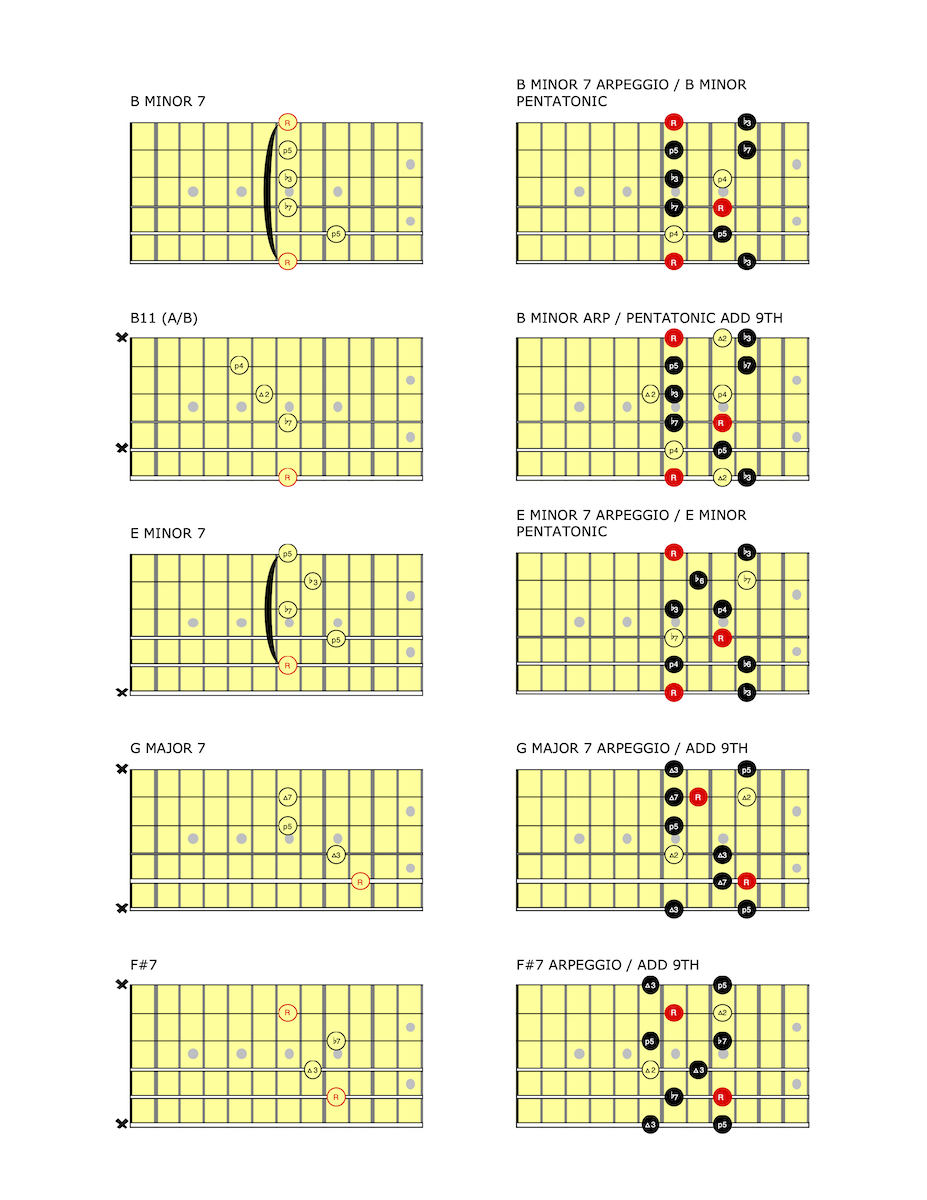
As shown in the chart above, the A/B (“slash”) chord used here is also known as a B11. The best way to think of this chord is as a harmonic variation of the Bmi7. It still retains a Bmi7 tonality but gives us the additional tones of C# (Major 2nd / Major 9th) and the note E, which would be the Perfect 4th. Think of these additional tones as chord extensions of the Bmi7 chord.Given that we have these additional tones in the harmony — tones I call the “sweet” notes — I chose to use them extensively in the solo lines I played in the first video. Over the Bmi7 chord, I’m playing the B minor pentatonic scale and Bmi7 arpeggios, and over the A/B (B11) chord, I’m targeting the aforementioned chord extensions. Thoughtfully phrasing your ideas this way will bring your minor pentatonic playing chops to life and dramatically change your melodic palette over any blues progression.
Over the Emi7 chord sections, the E minor pentatonic scale will sound great. It also gives you all the chord-tone resolution points of Emi7, plus the Perfect 4th for additional tonal coloration.
Try using a G major 7th arpeggio to “outline” the Gma7 chord. You could also use the E minor pentatonic scale (i.e., the G major pentatonic scale). However, bear in mind that those scale choices won’t give you the Major 7th. This is one note you should be looking to hit if you want to sound like a guitar hero when playing over this kind of progression.
Similarly, an F#7 arpeggio is the perfect choice to nail the bluesy tone of the V7 dominant chord. A# is the Major 3rd of the F#7 chord and arpeggio — a note that will really stand out. Just make sure you don’t hit this tone over any other chord. If you do (by mistake), play it again, smile, give a thumbs-up and move on quickly!
Here’s another suggestion: try leading into the Gma7 and F#7 chords with the corresponding arpeggio two beats before the chord arrives in the progression … and then end your phrase over the chord instead of starting it there. I think you’ll like how that preempts the tonality of the chords in a very musical way!
If you aren’t used to combining different scales and arpeggios, this approach is going to present some challenges, but trust me, it’s worth it, because it will elevate your playing to a whole new level.
The Wrap-Up
When it comes to live performance, I don’t leave anything to chance. Preparing music that pairs well with the instruments I’ll be playing is imperative, and I always try to evoke the sweet notes and melodies that capitalize on the harmonic structure of the backing music and demonstrate the unique tonal characteristic of the guitars I’m playing. At the end of the day, it’s all about leaving the audience wanting to hear more!
Photograph of Robbie Calvo by Steve Leiken.
Check out Robbie’s other postings.
Click here for more information about Yamaha SILENT guitars.
Click here for more information about the Line 6 Helix guitar processor.
Click here for more information about Yamaha Red Label guitars.
Click here for more information about Yamaha Revstar guitars.
Click here for more information about the Yamaha SA2200 guitar.
Click here for more information about the Line 6 Powercab 212 Plus guitar amplifier.











